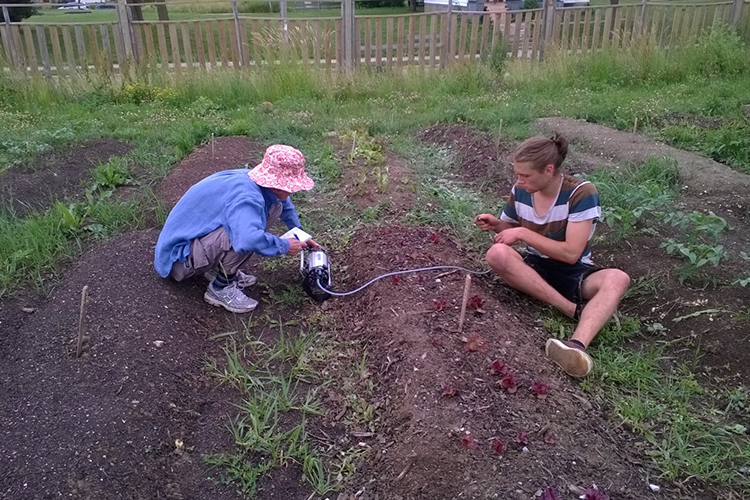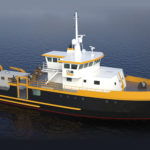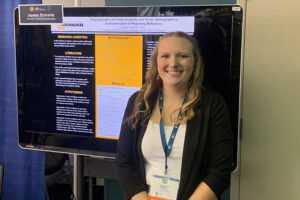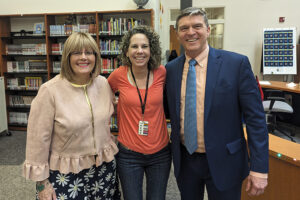An ambitious collaboration wants to change the way Milwaukee thinks about its leftovers.
The Compost Project, formally known as a “Systems Approach to Food Waste Composting for Urban Agriculture,” is wrapping up after two years of exploring composting in Wisconsin’s biggest city. Funded by a USDA grant, the project sought to answer the question, can composting be a viable industry in Milwaukee?
The endeavor was overseen by Greg Lawless, a project manager for the University of Wisconsin Cooperative Extension. He was helped along by a strong partnership that included UWM researchers. Donna Genzmer, the director of UWM’s Cartography and Geographic Information Science Center, served as the grant’s principal investigator in Milwaukee. Biological sciences professor John Berges lent his support, as did Anthony Ross, director of UWM’s Supply Chain Management Institute in the Lubar School of Business.
The meat of the problem
Food waste is an enormous part of the trash we throw out each year, and it takes space to bury and energy to burn.
“We’re taking that waste and we’re paying to get rid of it. That’s a problem, because we don’t have good things we can do with it,” Berges said. “And that food waste is an incredibly valuable resource. When we garden, we buy essentially the same stuff processed further at a premium.”
The Compost Project wants to take the waste product and turn it into compost. It’s great in theory, but tricky in logistics. How should food waste from homes and businesses be collected? How and where will it be processed into compost? And what makes compost effective?
A special delivery
Geographic Information Systems is a tool that marries technology and cartography. Data points can be collected and attached to any feature on a map, showing statistics, history and any other information users find important.
GIS can map the most efficient routes for food waste pickup.
“You’ve got the home that has the food waste,” Genzmer said. “The hauler that needs to figure out the route to take to pick it up. They need to have a place to take it. And they need to do it cost-efficiently. You want to start from far away so that the heavier your truck is, the closer you are to your final location.”
She’s also looking for locations that could host a compost processing center. Using parameters like lot size, proximity to residential areas and city land ownership, she’s been able to identify areas that Milwaukee could use to build such a plant in the future. Her research has been supported by work done by UWM’s Supply Chain Management Institute.
Quality compost
Berges, meanwhile, studied what makes compost effective.
“The problem is that no one has really objectively quantified what is ‘good’ compost. We are at the stage where an urban farmer will take a bag of compost, feel it, sniff it, and say, this is good compost,” Berges said. “What is she looking for when she picks up that compost? We don’t know.”
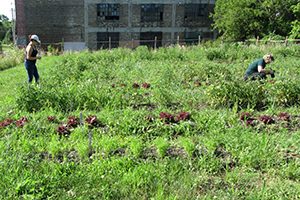
Working with Cream City Farms, a Milwaukee urban agriculture venture run by David Johnson (a 1993 UWM grad in economics), Berges and his students planted vegetables in three varieties of compost and observed the plants as the 2017 summer progressed. Unfortunately, Berges wasn’t able to get complete results, but there was a marked difference in appearance between the plants grown in the different types of compost.
“Because key parts of the field project were carried out by undergraduate students, who went back to classes before the produce was ready for harvest, we weren’t able to complete carbon, nitrogen and phosphorus analysis of the marketable vegetables,” he said. “(However), some plants did appear to be doing better than others.”
For now, he added, composting remains as much of an art born out of experience as it does a science.
The future for food waste
As the project ends in October, Genzmer is busy preparing models to present to the USDA showcasing how food waste pickup and composting in Milwaukee might be successful.
Composting has the potential to help more than just the environment, Genzmer added. Food waste collection and composting and selling the compost could be viable industries in the city that add jobs and benefit urban farms in economically distressed areas. Several composting or hauling companies already operating in Milwaukee, like Compost Crusaders, Blue Ribbon Organics and Purple Cow Organics, were community partners in the project.
“There’s a lot of interesting jobs and interesting entrepreneurial opportunities in here,” Berges said. “You can establish community gardens, but you have to have that quality compost in the soil to keep them going.
“You could be growing high-quality produce yourself at a fraction of the cost,” he added. “What’s not to like about that?”
